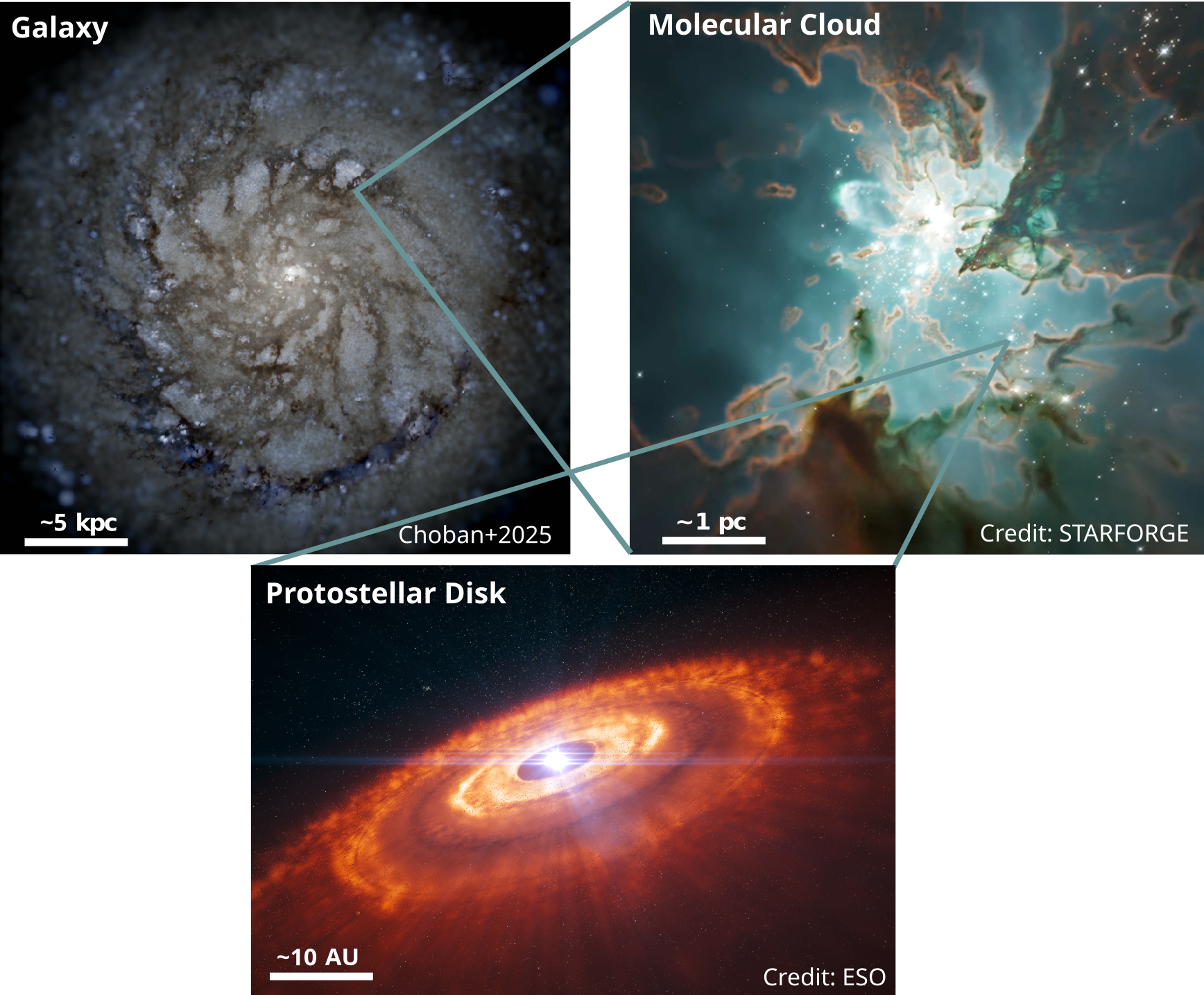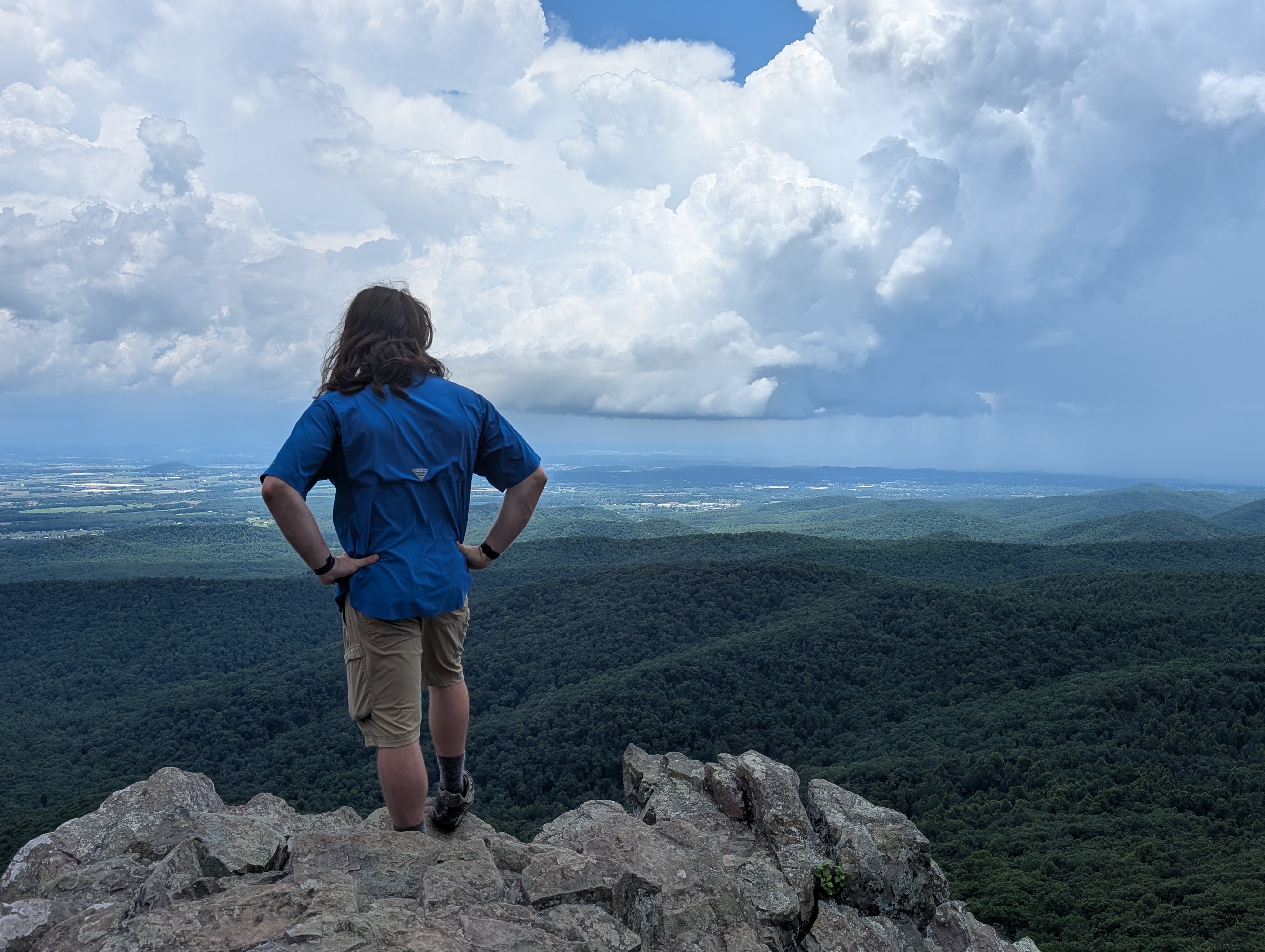Hello!
I’m Dr. Caleb Choban, an inaugural Sullivan Prize Fellow in Astronomy at IU Bloomington. My research utilizes simulations of galaxies to understand interstellar dust grains, numerous small particles (<1 μm) residing in the interstellar medium. These grains absorb starlight, indirectly make stars, and grow into exoplanets to name just a few of the amazing things they do. I’m particularly interested in understanding how dust grains evolve in galaxies and molecular clouds, and how this influences observations we make with telescopes such as the Hubble and James Webb Space Telescopes and the Atacama Large Millimeter Array.

Dust plays a role in the formation of galaxies, stars, and exoplanets! This image shows the vast physical scales dust plays a pivotal role in. Note the galaxy and molecular cloud shown are simulations from the FIRE and STARFORGE simulations. The dark spiral arms in the galaxy and brownish filaments in the molecular cloud are full of dust which absorbs visible light.
About Me
I grew up in the small town of Templeton in central California. I completed a B.Sc. in Physics at UC San Diego in 2016, were my work developing the SPLAT brown dwarf analysis toolkit with Prof. Adam Burgasser fostered my interests in coding and astronomy. I received a Ph.D. in Physics at UC San Diego in 2023, working with Prof. Dušan Kereš and collaborating with Prof. Karin Sandstrom, were I used big simulations to understand small interstellar dust grains.
Outside of research, I enjoy camping and hiking in national/state parks, rock climbing (only indoors so far), cycling and walking around the beautiful California coastline and Indiana forests and playing a good board game.


